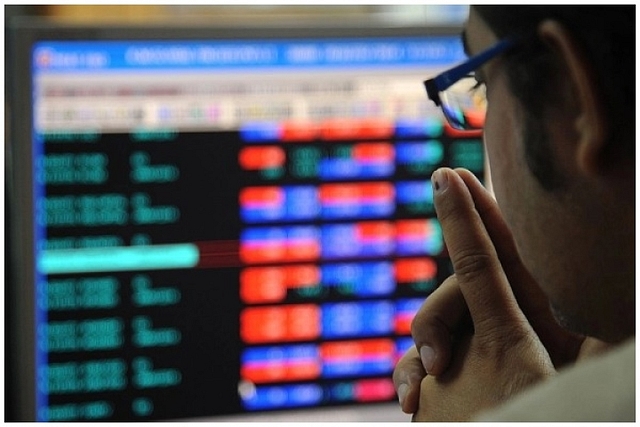
Why The Boom In Stocks Is Unreal; In 2021, You Have To Save More, Expect Lower Returns
When returns are going to be doubtful or low, you have to save more, consume less.
With bulls jumping over the moon, 2021 appears to be another good year for stocks. However, some fundamental assumptions about the best places to invest in 2021 need questioning.
Reason: the current bounce in the stock markets has been the result of governments all over the world pumping trillions of dollars of liquidity at near-zero rates of interest, and stocks are the main beneficiaries. Even otherwise, speculators have the option to borrow at super-low rates and invest in stocks, which is artificially boosting prices, including in India.
While this state of affairs may continue well into the first half of 2021, since the Covid threat has now been compounded by its resurgence both in the US and Europe, thanks additionally to a superspreading mutant strain, by the second half the situation could be totally different.
Governments will also be spending huge amounts to vaccinate their people, and if most of the vaccines actually work, governments will start withdrawing their stimulus programmes.
Central banks will have to start pushing up interest rates and shrinking their balance-sheets. Stocks will come back to earth. If speculators are making money hand over fist, cash-starved governments will also be tempted to claw back some of their gains through new capital gains taxes.
Here are some old assumptions that we may have to revisit.
One, one presumption is that stocks will always outperform other asset classes in the long term. This may or may not hold true in future, once the artificial props to liquidity are reduced. Some smart market experts are beginning to accept that past gains in stocks may not be replicable in future.
Raamdeo Agrawal, chairman of Motilal Oswal Financial Services, a huge believer in value investing over the long term, had this to say in an interview to Mint: “There were only 100 companies that beat the Sensex’s return of 9.2 percent in the last 25 years. This shows how difficult it is to be successful on a long-term basis. But the good thing is that a lot of companies got listed along the way after 1995. These new companies now make up as much as 50 percent of the current total market capitalisation. This proves that you will keep getting new opportunities.”
If one were to parse this statement for meaning, two things stand out. First, even over 25 years, stocks gave us only a 9.2 per cent annual returns. There were times when fixed deposit rates were as high. This contrasts with the double-digit growth one was led to expect earlier from stocks. Second, if only new and innovative companies are going to lead the next stock rally and dominate market capitalisation, making big money means finding the right kind of stocks to invest in early.
Put simply, this means we are entering a riskier market, where good stockpicking skills are key to higher returns, and passive investors – those investing through monthly SIPs, or systematic investment plans – will have to be content with lower returns than before. However, if excess liquidity is also boosting inflation, especially in countries like India, real returns on stocks will be wafer thin.
Two, if we accept the possibility of a resurgence of inflationary tendencies in India, it follows that savings avenues like fixed deposits and bonds may not deliver a real return. In the alternative, interest rates will have to rise faster, which will stop any economic revival dead in its tracks even before it has gathered steam. Savers thus have to brace themselves for a period of very low or even negative interest rates on safe savings avenues.
Three, real estate prices are bloated, and the trajectory is down, as state governments all over India seek to boost offtake by cutting duties and taxes. Builders are also accepting price cuts in order to offload existing inventories.
At some point, most governments will realise that unrealistic realty prices cannot be propped up by controlling land supplies and regulatory delays. They also know that jobs will not grow if a high employment generating sector like real estate is kept artificially chained.
This means policy efforts will keep real estate gains muted, if not negative, after inflation-adjustment. Your takeout: real estate is not investment. Buy only if you are going to live in your property, or you expect rentals to rise above 5 per cent yields. You can get above 5 per cent returns even on safe bank deposits or post office savings schemes.
Four, gold too is not an investment, but it is certainly an inflation hedge. Over the last 15 years, gold (in India) has actually delivered an average annual return of 14.1 per cent (see here), which is higher than stocks, and there were negative returns in only two years (2013, and 2015). So, do invest in sovereign gold bonds, but not too much. Gold prices are elevated right now, and investing now will not deliver high returns unless the world somehow stumbles into geopolitical tensions and regional wars. Then gold prices will hit the sky again.
But the real takeover is simpler: when returns are going to be doubtful or low, you have to save more, consume less. In the past, when there were no reliable banks or stock markets to deliver positive investment returns, people saved more for the future. We are back to that situation – not entirely, but heading there anyway.